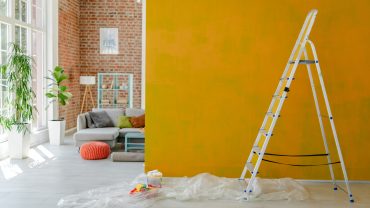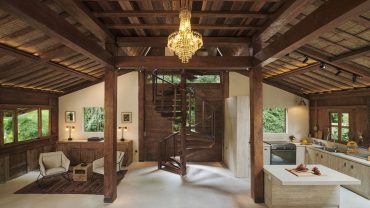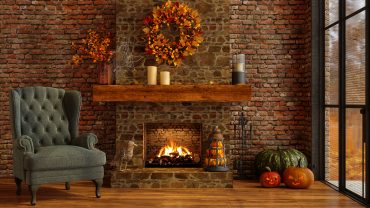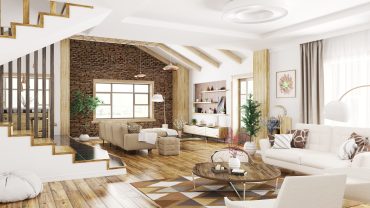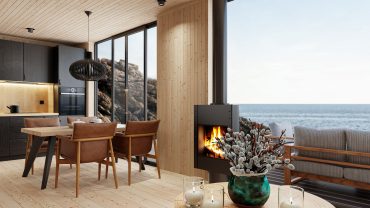With around half of the world’s population and a third of its landmass, Asia is the largest and most diverse continent on Earth. Indeed, with so many cultures, traditions, and histories, it seems impossible to assign a single style as intrinsically Asian. This is not least because the word’s connotations vary in different countries.
So, what do people mean when they refer to Asian interior design? Does it even have a universal meaning? That’s what we’re here to find out, along with identifying its key characteristics, and the various stylistic interpretations in Asian inspired house interiors. So read on, as we reveal all.
What is Asian Interior Design?

Modern Chinese style interior design (Credit: zhangxiaomin via Getty Images)
The ambiguity of the term “Asia” makes it very difficult to assign it any cohesive style of design. Even setting aside the nebulous boundaries of the continent, the very word bears different connotations across the world. For instance, in British English, it often refers to the countries of Southern Asia, such as India and Pakistan. The same word in the US usually means East Asian nations like China, Korea, and Japan. As such, it might be far more useful to consider Asian interior decor as an umbrella term for styles within the continent. And to narrow things down by regional or other parameters. Alternatively, one can refer to existing styles as falling under the general auspices of Asian interior design.
Regional Asian Interior Decor

Japanese style living space (Credit: Nongnuch Pitakkorn via Getty Images)
There are various classifications of Asian regions, most often dividing it into five or six areas, like Central, Eastern, Northern, South-eastern, Southern, and Western Asia. By way of comparison, let’s look at East and South Asian design, respectively the US and British perspectives.
East Asian Inspired House Interiors

Feng Shui principles in a living space (Credit: ArchiViz via Getty Images)
East Asian design draws significantly from Japanese and Chinese influences. And, while each has its own distinct aesthetic principles, materials, and cultural nuances, they’re often melded into a style all its own. Some of its features include:
- Natural Materials: Natural materials such as wood, bamboo, and stone are quintessential to East Asian interior decor. Furniture, flooring, and decorative elements extensively use these materials, infusing the space with an organic and grounded feel. This connection to nature is a hallmark of East Asian inspired house interiors, where every element echoes the outdoors.
- Neutral Colour Palette: A neutral colour palette forms the backbone of East Asian interior design. Earth tones and muted colours like white, cream, beige, and brown set a tranquil backdrop. However, vibrant accents, especially in shades of red, punctuate these neutral bases, bringing vitality and cultural symbolism into the mix.
- Minimalism: Minimalism is at the heart of East Asian interior style, particularly influenced by the Japanese concept of “wabi-sabi,” which celebrates understated elegance and beauty in imperfection. This principle results in uncluttered spaces that exude tranquillity and simplicity.
- Plentiful Light: Large windows, skylights, and indoor plants establish a strong link between interior and exterior spaces in East Asian interior design. This integration fosters a sense of peace and continuity, blurring the lines between the indoors and the natural world outside.
- Feng Shui Principles: Feng Shui, the ancient Chinese practice of arranging furniture and objects to create balance and harmony, is often incorporated into East Asian interior decor. This philosophy ensures that spaces are not only aesthetically pleasing but also energetically balanced, promoting well-being.
- Decorative Elements: Decorative elements in the East Asian interior style often include traditional motifs such as dragons, phoenixes, and specific flowers, along with calligraphy, screens, lanterns, and artwork featuring nature scenes.
- Textural Variety: East Asian interior decor thrives on textural variety, combining materials like wood, glass, silk, and lacquer to create a layered and dynamic aesthetic. This interplay of textures adds depth and complexity to the design.
- Asymmetrical Balance: Unlike Western design, which often emphasises symmetry, East Asian interior design favours asymmetrical balance. Furniture and decorative items are arranged to create a harmonious flow without perfect symmetry, reflecting the natural world’s inherent irregularities.
South Asian Inspired House Interiors

Vibrant interior of a villa in Sri Lanka (Credit: Alex Potemkin via Getty Images)
South Asian interior design is a rich and vibrant style that draws inspiration from the diverse cultures of countries like India, Pakistan, Bangladesh, Nepal, and Sri Lanka. This approach is characterised by several key elements:
- Vibrant Colours: South Asian Inspired House Interiors often feature bold, rich hues such as deep reds, blues, greens, and golds. These colours are used to create a warm and inviting atmosphere.
- Intricate Patterns: Elaborate designs and patterns are a hallmark of South Asian decor. These can be found in textiles, wall art, and even architectural elements like carved wooden panels or patterned tiles.
- Textiles and Fabrics: Luxurious fabrics like silk, cotton, and embroidered textiles play a significant role in South Asian interiors. These are often used for curtains, upholstery, and decorative elements like cushions and throws.
- Traditional Furniture: South Asian design often incorporates furniture with intricate carvings and detailed craftsmanship. Pieces like low seating, swing seats, and wooden storage chests are common.
- Ornate Accessories: Decorative items such as brass or copper vessels, colourful pottery, and intricate mirrors are frequently used to add visual interest and cultural significance to spaces.
- Natural Materials: The use of natural materials like wood, stone, and bamboo is prevalent in South Asian interior design, often showcasing traditional craftsmanship.
- Cultural Motifs: Designs often incorporate symbolic elements and motifs from South Asian cultures, such as religious symbols, floral patterns, or animal representations.
- Textural Variety: South Asian interiors typically feature a mix of textures, from smooth polished surfaces to rough-hewn natural materials, adding depth and interest to the space.
- Emphasis on Handcrafted Items: Artisanal and handcrafted decor pieces are highly valued in South Asian design, showcasing the region’s rich tradition of craftsmanship.
Other Asian Interior Styles

A wabi-sabi interior space (Credit: Vasyl Cheipesh via Getty Images)
Another way to view Asian design is as an umbrella term that encompasses various styles from the region. Each of these styles offers unique interpretations of Asian aesthetics, drawing from their distinct cultural and historical contexts.
Japanese Style
Characterised by minimalism, simplicity, and a close connection to nature, Japanese interior design features clean lines, open spaces, and neutral colours. Natural materials like wood and stone are prominently used, emphasising tranquillity and balance.
Chinese Style
Usually more opulent and grand compared to Japanese design, Chinese interior design typically includes rich colours like red, gold, jade, and purple. Intricate details, ornate furniture, and traditional motifs such as dragons, fish, and flowers are hallmarks of this style.
Zen Style
Rooted in Japanese Buddhism, Zen interior design focuses on creating calm, meditative spaces. It emphasises simplicity, natural materials, and a clutter-free environment, fostering a sense of inner peace.
Feng Shui
A Chinese design philosophy, Feng Shui aims to create harmony and balance in a space through the strategic arrangement of furniture and decor elements. This practice ensures that spaces are energetically balanced and conducive to well-being.
Chinoiserie
Chinoiserie is a Western interpretation of Chinese design, featuring fanciful depictions of Chinese motifs and scenes on furniture, textiles, and decorative objects. This style blends Eastern aesthetics with Western opulence, creating a unique fusion.
Japandi
Japandi interior design, a fusion of Japanese and Scandinavian design, emphasises simplicity, functionality, and a connection to nature. This style combines the minimalism and tranquillity of Japanese design with the cosiness and warmth of Scandinavian interiors.
Wabi Sabi
Wabi sabi interior design, a Japanese aesthetic, celebrates the beauty of imperfection and impermanence. This style emphasises natural materials, earthy colours, and a sense of rustic simplicity, creating spaces that are both humble and profound.
Modern Asian Interior Design: A Fusion of Old and New

Modern Asian interior design (Credit: onurdongel via Getty Images)
Modern Asian interior design is a fusion of traditional elements and contemporary trends. This style retains the core principles of whichever form of Asian design is applied while incorporating modern materials, technologies, and aesthetics. The result is a versatile and timeless design that can adapt to various personal tastes and lifestyles.
Summing Up Asian Interior Design

Japandi style living room (Credit: Nongnuch Pitakkorn via Getty Images)
In conclusion, Asian interior decor is as diverse and varied as its namesake continent. In fact, it’s more a classification for other Asian inspired house interior styles than an aesthetic in its own right.




